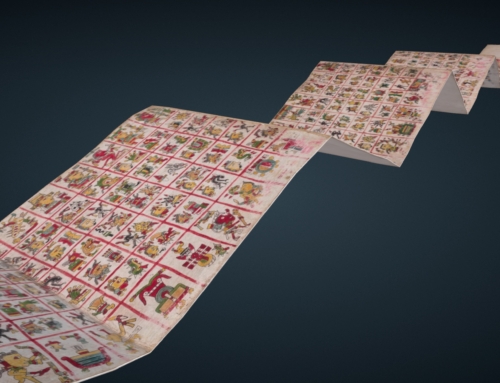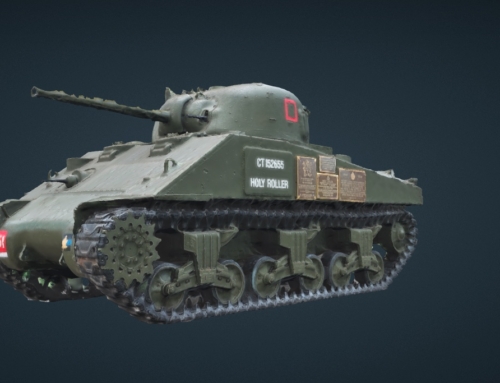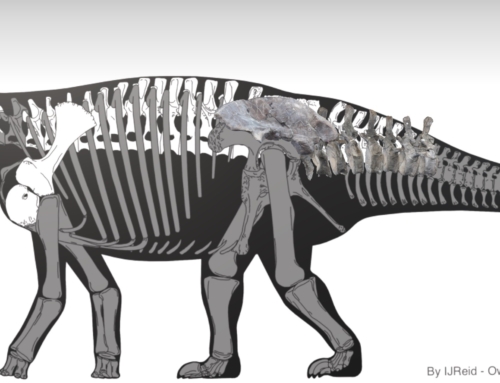A Bottle in the Form of a Whale and Shoe

The project embarks on a captivating exploration of art and craftsmanship, focusing on a distinctive artefact, on loan from the Koninklijk Oudheidkundig Genootschap to the Rijksmuseum’s special collections since 1885. This enigmatic object, recognized as a bottle resembling both a whale and a shoe, represents a curious fusion of form and utility. The aim of this project is to delve beyond the external attributes of the Shoe-Whale Bottle, and probe into the interiors of this quirky object, to reveal the narratives and aspects of artwork concealed within. The researchers seek to unravel the intricacies of its craftsmanship, shed light on its potential functions, and contextualise its cultural and historical significance.
Methodology
X-ray Computed Tomography (CT) emerged as a powerful tool, enabling researchers to visualise the object’s interior in three dimensions. CT scanning, conducted at the FleX-ray lab at CWI, yielded a wealth of data, consisting of hundreds of individual X-ray images. These images, reconstructed into a 3D representation of the object, provided unprecedented insights into its internal composition. However, interpreting this data presented a challenge, as museum professionals are accustomed to examining objects in three dimensions rather than two.
To bridge this gap, the IntACT project sought to revolutionise the visualisation of CT data. Collaborating with the Rijksmuseum, researchers endeavoured to develop an interactive 3D visualisation environment, seamlessly integrating CT scans with 3D surface scans of the object.
Blender, a free and open-source 3D graphics software, emerged as the platform of choice for this ambitious endeavour. Leveraging Blender’s capabilities, the team devised a custom environment that allowed users to explore the object’s internal structure in unprecedented detail.
Three distinct data representations came into play: the 2D slices of the CT scan, the 3D representation of the CT scan, and the 3D coloured surface scan. By aligning these data modalities and enabling interactive exploration, researchers were able to unravel the mysteries concealed within the Bottle in the form of a shoe.
Key Findings
Initial findings gleaned from the scans reveal intriguing details about the artefact’s composition and craftsmanship. It was seen that the bottle/shoe could be opened up to reveal the hollow interiors, which suggest functionality as a vessel, while the intricate design elements speak to the skill of its creator and potential symbolic significance.
In conclusion, the IntACT project exemplifies the intersection of art, technology, and innovation in cultural heritage analysis. By harnessing the power of CT scanning and 3D visualisation, researchers have unlocked new avenues of exploration, paving the way for future discoveries in the field of art history and conservation. We hope that Pure3D can further play a role in examining the narratives around this fascinating object, and contextualising them for audiences to engage and appreciate.
For more information on the project, go to –
3D Scholarly Edition Author: Francien Bossema
As the Migelien Gerritzen Fellow at the Rijksmuseum, the Centrum Wiskunde & Informatica (CWI), and Fellow at the eScience Center, Francien focuses her research on Computed Tomography (CT) scanning for Cultural Heritage Research within the Impact4Art project, a collaboration between CWI and Rijksmuseum in Amsterdam, The Netherlands. Her academic journey includes a guest researcher position at the British Museum in 2022. Through collaborative efforts with colleagues at CWI and Rijksmuseum, she explores the intersection of mathematics, computer science, and cultural heritage, tailoring X-ray imaging techniques to meet the specific demands of scanning artefacts. Her interdisciplinary approach merges technical investigations with hands-on case studies at the museum, emphasising a commitment to both scientific rigour and effective science communication—an interest nurtured during her Master’s specialisation at Leiden University.






